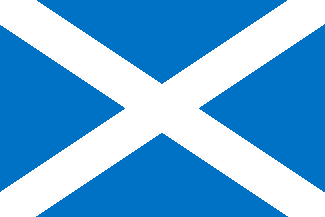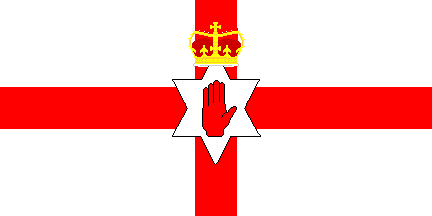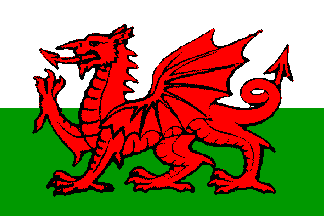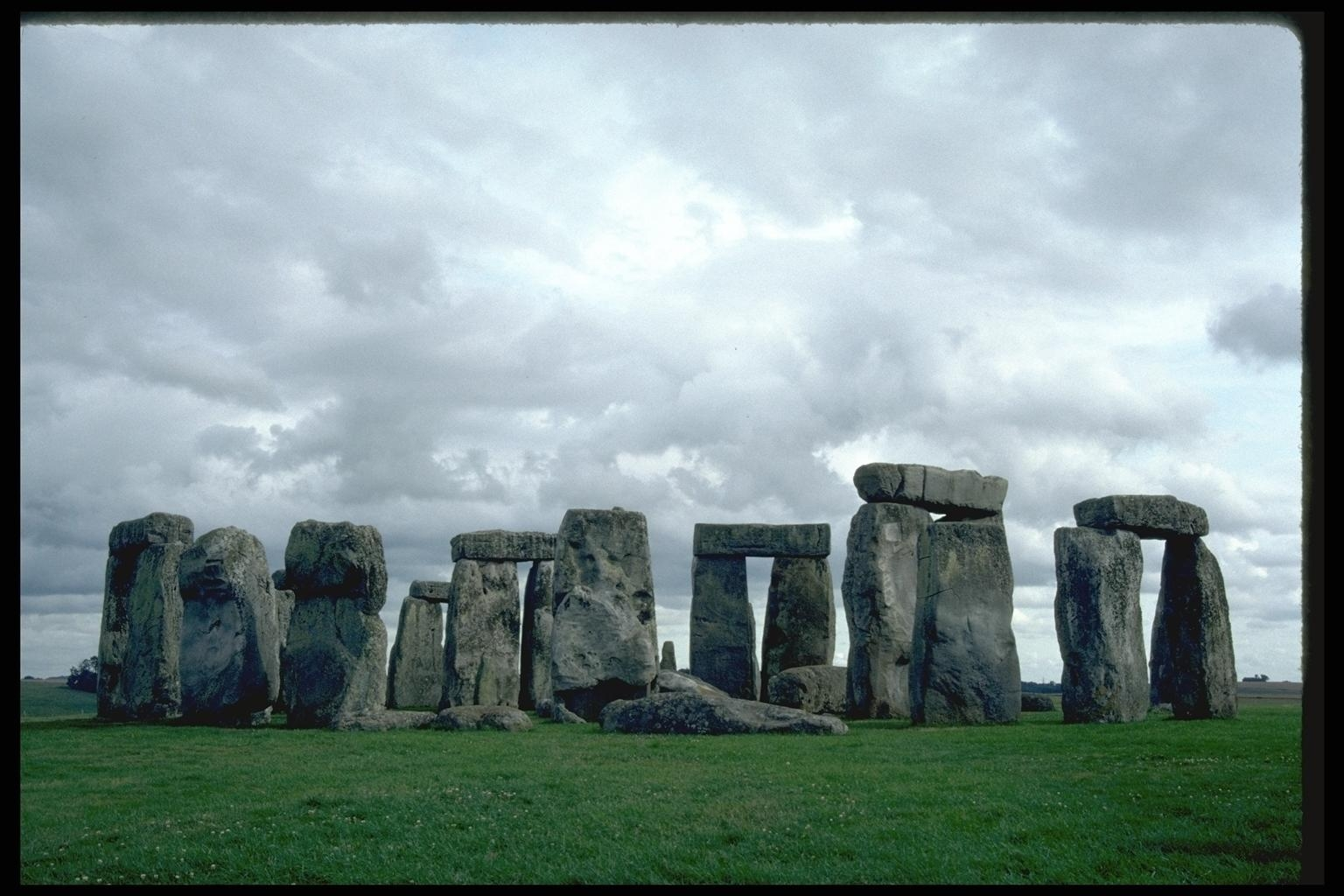
- •A Country Across the Channel
- •I. Fill in the blanks with the correct words.
- •II. Complete the sentences with the best answer (a, b or c).
- •III. Are the statements true or false? Correct the false statements.
- •IV. Answer the questions.
- •V. Draw a sketch-map of the British Isles and mark in the following.
- •Britain-an Island, or a Peninsula?
- •I. Fill in the blanks with the correct words.
- •II Complete the sentences with the best answer (a, b or c).
- •III. Are the statements true or false? Correct the false statements.
- •IV. Answer the questions.
- •V. Do you remember?
- •The Face of Britain
- •II. Complete the sentences with the best answer (a, b or c).
- •III. Are the statements true or false? Correct the false statements.
- •IV. Answer the questions.
- •V. Draw a sketch map of the British Isles and include
- •Climate and Weather
- •I. Fill in the blanks with the correct words.
- •II. Complete the sentences with the best answer (a, b or c).
- •III. Are the statements true or false? Correct the false statements.
- •IV. Answer the questions.
- •Mineral Wealth
- •I. Fill in the blanks with the correct words.
- •II. Complete the sentences with the best answer (a, b or c).
- •III. Are the statements true or false? Correct the false statements.
- •IV. Answer the questions.
- •Who Are the British? (I) Ancient and Roman Britain
- •I. Fill in the blanks with the correct words.
- •II. Complete the sentences with the best answer (a, b or c).
- •III. Are the statements true or false? Correct the false statements.
- •IV. Answer the questions.
- •Who Are the British ? (II) t he Anglo-Saxons, Danes and Normans
- •I. Fill in the blanks with the correct words.
- •II. Complete the sentences with the best answer (a, b or c).
- •III. Are the statements true or false? Correct the false statements.
- •IV. Answer the questions.
- •Who Are the British? (Ill) The Irish
- •I. Fill in the blanks with the correct words.
- •II. Complete the sentences with the best answer (a, b or c).
- •III. Are the statements true or false? Correct the false statements.
- •IV. Answer the questions.
- •Stonehenge and Avebury
- •I. Fill in the blanks with the correct words.
- •III. Are the statements true or false? Correct the false statements.
- •IV. Answer the questions.
- •V. Explain the following
- •I. Fill in the blanks with the correct words.
- •II. Complete the sentences with the best answer (a, b or c).
- •III. Are the statements true or false? Correct the false statements.
- •IV. Answer the questions.
- •V. Do you remember?
- •Northern Ireland - the Land of the Giant's Causeway
- •I. Fill in the blanks with the correct words.
- •II. Complete the sentences with the best answer (a, b or c).
- •III. Are the statements true or false? Correct the false statements.
- •IV. Answer the Questions.
- •V. Explain:
- •Great Britain - a Constitutional Monarchy
- •I. Fill in the blanks with the correct words.
- •II. Complete the sentences with the best answer (a, bore).
- •III. Are the statements true or false? Correct the false statements.
- •IV. Answer the questions.
- •Mother of Parliaments
- •I. Fill in the blanks with the correct words.
- •II. Complete the sentences with the best answer (a, b or c).
- •III. Are the statements true or false? Correct the false statements.
- •IV. Answer the questions.
- •The Party System and the Government
- •I. Fill in the blanks with the correct words.
- •II. Complete the sentences with the best answer (a, b or c).
- •III. Are the statements true or false? Correct the false statements.
- •IV. Answer the questions.
- •The Press
- •I. Fill in the blanks with the correct words.
- •II. Complete the sentences with the best answer (a, b or c).
- •III Are the statements true or false? Correct the false statements.
- •IV. Answer the questions.
- •Radio and Television
- •I. Fill in the blanks with the correct words.
- •II. Complete the sentences with the best answer (a, b or c).
- •III. Are the statements true or false? Correct the false statements.
- •IV. Answer the questions.
- •The School Education
- •I. Fill in the blanks with the correct words.
- •II. Complete the sentences with the best answer (a, b or c).
- •III. Are the statements true or false? Correct the false statements.
- •IV. Answer the questions.
- •The Public Schools
- •I. Fill in the blanks with the correct words.
- •II. Complete the sentences with the best answer (a, b or c).
- •III. Are the statements true or false? Correct the false statements.
- •IV. Answer the questions.
- •The Economy. The South
- •I. Fill in the blanks with the correct words.
- •II. Complete the sentences with the best answer (a, b or c).
- •III. Are the statements true or false? Correct the false statements.
- •IV. Answer the questions.
- •The Regions of Britain
- •I. Fill in the blanks with the correct words.
- •III. Are the statements true or false? Correct the false statements.
- •IV. Answer the questions.
- •V. Do you remember?
- •Transport
- •I. Fill in the blanks with the correct words.
- •II. Complete the sentences with the best answer (a, b or c).
- •III. Are the statements true or false? Correct the false statements.
- •IV. Answer the questions.
- •Agriculture
- •I. Fill in the blanks with the correct words.
- •II. Complete the sentences with the best answer (a, b or c).
- •III. Are the statements true or false? Correct the false statements.
- •IV. Answer the questions.
- •Food and Meals
- •I. Fill in the blanks with the correct words.
- •III. Are the statements true or false? Correct the false statements.
- •IV. Answer the questions.
- •Some National Traits
- •I. Fill in the blanks with the correct words.
- •II. Complete the sentences with the best answer (a, b or c).
- •III. Are the statements true or false? Correct the false statements.
- •IV. Answer the questions.
- •The Church In Modern Life
- •II. Complete the sentences with the best answer (a, b or c).
- •III. Are the statements true or false? Correct the false statements.
- •IV. Answer the questions.
- •The British In Their Private Life
- •I. Fill in the blanks with the correct words.
- •III. Are the statements true or false? Correct the false statements.
- •IV. Answer the questions.
- •V. Do you remember?
- •English Gardens and Gardeners
- •I. Fill in the blanks with the correct words.
- •III. Are the statements true or false? Correct the false statements.
- •IV. Answer the questions.
- •Leisure and Sports
- •I. Fill in the blanks with the correct words.
- •III. Are the statements true or false? Correct the false statements.
- •IV. Answer the questions.
- •King Arthur
- •I. Fill in the blanks with the correct words.
- •II. Complete the sentences with the best answer (a, b or c).
- •III. Are the statements true or false? Correct the false statements.
- •IV. Answer the questions.
- •V. Do you remember?
- •"My Bonnie Lies Over the Ocean... "
- •I. Fill in the blanks with the correct words.
- •III. Are the statements true or false? Correct the false statements.
- •IV. Answer the questions.
- •Canterbury Cathedral and Geoffrey Chaucer - the Great English Story-Teller
- •I. Fill in the blanks with the correct words.
- •II. Complete the sentences with the best answer (a, b or c).
- •III. Are the statements true or false? Correct the false statements.
- •IV. Answer the questions.
- •Shakespeare and Shakespeareland
- •I. Fill in the blanks with the correct words.
- •III. Are the statements true or false? Correct the false statements.
- •IV. Answer the questions.
- •Britain's Great Hero
- •I. Fill in the blanks with the correct words.
- •II. Complete the sentences with the best answer (a, b or c).
- •III. Are the statements true or false? Correct the false statements.
- •IV. Answer the questions.
- •"The Lady With the Lamp"
- •I. Fill in the blanks with the correct words.
- •II. Complete the sentences with the best answer (a, b or c).
- •III. Are the statements true or false? Correct the false statements.
- •IV. Answer the questions.
- •Museums and Other Treasures
- •I. Fill in the blanks with the correct words.
- •II. Complete the sentences with the best answer (a, h or c).
- •III. Are the statements true or false? Correct the false statements.
- •IV. Answer the questions.
- •Chronological outline
- •Kings and queens of england from alfred
- •British prime ministers and governments
Who Are the British? (I) Ancient and Roman Britain
T


 his
word is used about the people who live on the British Isles, and to
be more exact, who live in England, Wales, Scotland and Northern
Ireland. They are all united in one country officially known as the
United Kingdom of Great Britain and Northern Ireland, or shortly U.K.
The flag of the United Kingdom known as the Union Jack, reflects the
history of the State. This term can be explained as follows: “Union”
reflects the union of England and Scotland in 1606, and "jack"
means the flag flown on the jack staff (a small flagstaff) of ships
to show their nationality. The Union Jack is made up of three crosses
on a blue ground. The blue colour refers to the seas surrounding
Britain. The central red cross is the cross of St. George, the patron
saint of England. The white diagonal cross (with the arms going into
the corners) is the cross of St. Andrew, the patron saint of
Scotland. The red diagonal cross is the cross of St. Patrick, the
patron saint of Ireland, but today it refers to Northern Ireland. St.
David is the patron saint of Wales, but the symbol of Wales is not
reflected in the Union Jack, because when the flag first appeared
Wales was already firmly united with England. The Welsh flag is a red
dragon on a white and green ground.
his
word is used about the people who live on the British Isles, and to
be more exact, who live in England, Wales, Scotland and Northern
Ireland. They are all united in one country officially known as the
United Kingdom of Great Britain and Northern Ireland, or shortly U.K.
The flag of the United Kingdom known as the Union Jack, reflects the
history of the State. This term can be explained as follows: “Union”
reflects the union of England and Scotland in 1606, and "jack"
means the flag flown on the jack staff (a small flagstaff) of ships
to show their nationality. The Union Jack is made up of three crosses
on a blue ground. The blue colour refers to the seas surrounding
Britain. The central red cross is the cross of St. George, the patron
saint of England. The white diagonal cross (with the arms going into
the corners) is the cross of St. Andrew, the patron saint of
Scotland. The red diagonal cross is the cross of St. Patrick, the
patron saint of Ireland, but today it refers to Northern Ireland. St.
David is the patron saint of Wales, but the symbol of Wales is not
reflected in the Union Jack, because when the flag first appeared
Wales was already firmly united with England. The Welsh flag is a red
dragon on a white and green ground.
The English, Welsh, Scottish and Northern Irish are different from each other, and to understand the reasons for this we are to take a short glimpse into the history of the country.
In prehistoric times Britain was joined to the rest of Europe. The first people, and many animals, came there over dry land. Towards the end of the Ice Age the low-lying land areas became covered with water, and thus the present English Channel was formed. The hunters of the New Stone Age crossed the sea to Britain to the west of the Channel and settled along the Western shores in their search of food.
The first inhabitants of the island for whom a traditional name exists are the Iberian or Megalithic people (from the words monolith, megalith or big stones which they used), who lived mainly in the western part of the country. They are thought to have come from the region of the Mediterranean Sea (the Iberian peninsula where Spain is located) somewhere after 3000 B.C. (before Christ). Soon after 2000 B.C. another people entered the country from the east of Europe. The two peoples intermixed. The ancient people left behind impressive monuments of which Stonehenge and Avebury are most remarkable. (See unit 9)
T he
arrival of the Celts from Central Europe after 800 B.C. opened up a
new and important page of British history. The name "Britain"
comes from the name of a Celtic tribe known as the Britons who
settled in the country. The Celts spoke the Celtic language. The
influence of the Celts was greatest in Wales, Scotland and Ireland.
They were driven to these parts by the invaders who followed them.
Due to this, these parts of Britain are very different from England
in language, custom, traditions.
he
arrival of the Celts from Central Europe after 800 B.C. opened up a
new and important page of British history. The name "Britain"
comes from the name of a Celtic tribe known as the Britons who
settled in the country. The Celts spoke the Celtic language. The
influence of the Celts was greatest in Wales, Scotland and Ireland.
They were driven to these parts by the invaders who followed them.
Due to this, these parts of Britain are very different from England
in language, custom, traditions.
Welsh is one of the Celtic languages, like Scottish and Irish Gaelic. About 16 to 20 per cent of the population of Wales speak the Welsh language, although in north and west Wales about half of the population speak the local tongue. According to the Act of 1967 all official documents in Wales should be in English and Welsh, and most road signs are in both languages. Although not many Welsh words are well-known in England, the word "eisteddfod" is understood by almost everybody. This is the Welsh name for an annual competition where people meet to dance, sing and read poems. This festival attracts people from all over the country. In recent years there is a growing interest in teaming this language not only in Wales.
Scottish Gaelic and Irish Gaelic are still spoken in Scotland and Northern Ireland, although they have suffered more than Welsh from the spread of English. However, these languages are being taught and learned in schools. The Scots have very many interesting traditions, games, of which they are very proud. The Scottish song "For Auld Lang Syne" which means "in memory of past times" was written by Scotland's most famous poet, Robert Burns, and it is sung all over Britain. Many Scottish people still use some Scottish words when they speak English. For example, "a bonnie lass" is a pretty girl and a "bairn" is a young child, or if the Scots say "aye" it means that they agree with you. Many people in Scotland have the name MacDonald or MacKenzie. "Mac" means "son of" and people with this name feel that they belong to the same family or clan. The Gaelic word "claim" means "family", or "descendants" and the great clans of Scotland were really very big families ruled by powerful chiefs.
In England itself Celtic influence is felt to this very day, though this influence is much weaker, as compared with the other parts of the country. The Celts worshipped nature. The oak-tree and mistletoe were sacred. Water was also worshipped as the source of life. There are place-names in England connected with the Celts. For example, Avon — the name of a river, which means "water" in Celtic. The origin of the name Severn — the longest river in the country — is connected with the name of a Celtic goddess — Sabrina. The tradition of decorating the homes in Britain during Christmas with branches of such plants as the mistletoe and holly is connected with the customs of the Celts, who believed that these plants protected their homes against evil spirits. The most interesting description of the life of the Celts was given by Julius Caesar, the Roman ruler, who first invaded Britain in 55 B.C.
The Greeks called the Island "Albion", and the Romans said that this meant "white land", because the first view of Britain for most visitors was the white cliffs near Dover. Caesar knew that Britain produced corn which the Romans needed. Tin, widely used in Rome, was exported from Cornwall. And the Romans needed a fresh supply of slaves. Moreover, the Celts in Britain helped their kinsmen in Gaul (the present territory of France) in their struggle against the Romans who wanted to conquer them. So Caesar decided to punish the Britons for their support. However, Caesar's first expedition was not successful, because his force was small, and the Celts fought well. So in the following year, that is in 54 B.C., he invaded the country with a larger army of 25,000 men. This time the expedition was successful, and the Celts were defeated. But Caesar did not stay in Britain. He left the country with many slaves and other riches, and he received a promise from the Celts that they would pay a regular tribute to Rome.
Some 90 years later, that is in 43 A.D. (Anno Domini; Latin — "in the year of Christ") the country was conquered by the Romans. This occupation of Britain continued to the beginning of the fifth century (about 410). Not all of Britain was firmly in the hands of the Romans. In the south and south-eastern parts Roman influence was greatest, while in the north and west the country remained much untouched.
Many towns were built by the Romans which were connected by good roads. Some of these roads still exist to this very day. For Example, Watling Street from London to Chester, or Icknield Way connecting London with Cirencester. Most British towns with names ending with "chester" were, in Roman times, fortified camps. You can see much of Roman times in the ancient town of Colchester, which became a town for retired Roman soldiers. Here is the best preserved Roman gateway in Britain. You can see here the original Roman walls. Evidence of the Roman past can be seen in many places of Britain. Bath was well known to the Romans. They discovered the hot mineral springs that could be used for curing all kinds of illnesses. The wonderful baths which the Romans built are now one of the main tourist attractions in Bath. In the eighteenth century, Bath became famous as a spa, where people used to go to "take the waters". When you go to Bath, you can visit the Pump Room and drink from the fountain. The water has an unpleasant taste, but it is very good for you.
The largest of the towns was called Londinium. It began life as a Roman fort at a place where it was possible to cross the river Thames. Many believe that here was a Celtic settlement called "Llyn-dyn" which meant "lake-fort" and which the Romans changed into Latin. Ruins of the old Roman wall can be seen today in the Tower of London. Many walls were built to defend the country from the attacks of the barbarians living in the north and west. Most outstanding was the wall built on the orders of Emperor Hadrian in the north near Scotland. This wall roughly divided England from Scotland, and was to keep out the Picts and Scots. You can see much of this wall today if you go there. Roman culture and civilization had a positive influence on the development of the country. Life in the south and south-east of Britain resembled life in Rome, and there was a lively trade between Britain and the continent. However, when the Romans left the country at the beginning of the fifth century, Britain became open to the attacks of newcomers from the continent who destroyed Roman civilization and culture.
Comprehension Check
